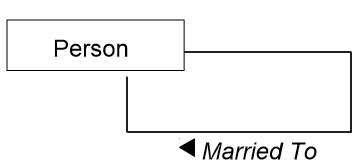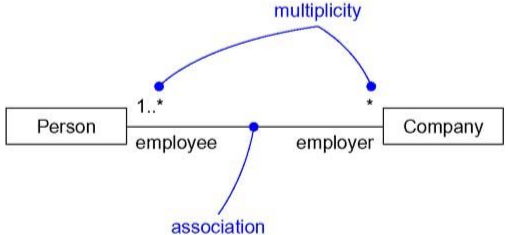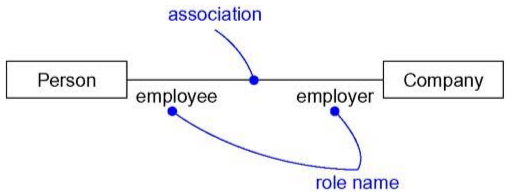What is Association in UML?
In the UML, the ways that things can connect to one another, either logically or physically, are modeled as relationships. An association is a structural relationship that specifies that objects of one thing are connected to objects of another. Given an association connecting two classes, you can navigate from an object of one class to an object of the other class, and vice versa.
Note: In object-oriented modeling, there are three kinds of relationships that are most important: dependencies, generalizations, and associations.
A navigable association is represented by an open arrow.

A bidirectional association does not have an arrow.

A binary association is drawn as a solid path connecting two classes

A binary association can also be connected both ends may of the same class.

Name An association can have a name, and you use that name to describe the nature of the relationship. So that there is no ambiguity about its meaning.
Direction
You can give a direction to the name by providing a direction triangle that points in the direction you intend to read the name, as shown in The Figure below

Role When a class participates in an association, it has a specific role that it plays in that relationship; a role is just the face the class at the near end of the association presents to the class at the other end of the association.

Multiplicity An association represents a structural relationship among objects. In many modeling situations, it's important for you to state how many objects may be connected across an instance of an association.

UML Tutorials:
Class Diagram tutorials